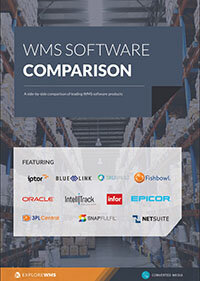Five steps to the perfect WMS purchase decision
Your WMS selection project is close to complete. You have probably already chosen a favorite - at most, there are a couple of possible contenders. This WMS purchase is a decision that your business will live with a long time, so make it a good one.
1. Analyze the demonstrations
Ask every person on your selection team to complete a demo scorecard. List all of your requirements. Each person should rank how well that demo addressed your requirements one by one. Use a numeric scale - 5 points for perfectly matching your requirement and 1 point for barely addressing the requirement at all. Systems will score well on some requirements and not so well on others.
Make the best purchase decision possible using this comprehensive WMS selection checklist
2. Check references thoroughly
Before you purchase a WMS, develop another matrix to rank how well other businesses are satisfied with the software. Pay close attention to those with similar requirements to yours. If they had to make the choice again, what might they do differently? References can tell you a lot beyond any demonstration or sales proposal. How satisfied are they with the support provided? Did they learn about any unexpected costs after their choice was made? When they began to use the system, did it work as well as expected? How long did the implementation take? What resources did they employ during implementation? Try to use numeric scores on each point where the highest score is your best choice for your WMS.
3. Check your gut
All your best analytics might point to one WMS, but you still have an uneasy feeling. That feeling is very important – pay attention! What about the other members of your team? Do they have the same feeling? Can you identify specifically why you have this feeling? Even if this is the first time analyzing WMS, this is not the first hard decision you have made. There is an old saying: If something smells fishy, it probably is.
4. Work out your projected ROI
You have all the cost factors and the timing of those expenses. Look again at the benefits you expect from meeting your requirements. You know a lot more now than you did a few weeks ago. Your benefit could have improved. Calculate the return on investment for each contending WMS. Your business has a threshold ROI. Do your WMS contenders meet that threshold? Which one has the best return? Is that WMS the same one that scored highest in the demo and reference matrix?
5. Get executive approval
Present your analyses to your executive sponsor and the top management team. They might present questions to be taken back to your prospective vendors. They might also completely agree with your recommendation. Before leaping into the WMS purchase full on, plan to begin negotiations with the leading contender. What better terms can you achieve? Who will lead your negotiating team? This last step is the most important. The executive team must back your implementation for any chance at success.
Free white paper

WMS selection survival guide
Exclusive, six-step guide to finding the best WMS for your business

Featured white papers
Related articles
-

How much WMS software costs and how to set your budget
A complete guide to WMS costs, and how to calculate your budget based on these
-

Mission-critical features of food lot traceability software
What features of food traceability software will help you during a food recall
-

Here's your complete WMS modules and features checklist
All the features and modules you might need in your WMS - perfect for requirements gathering




